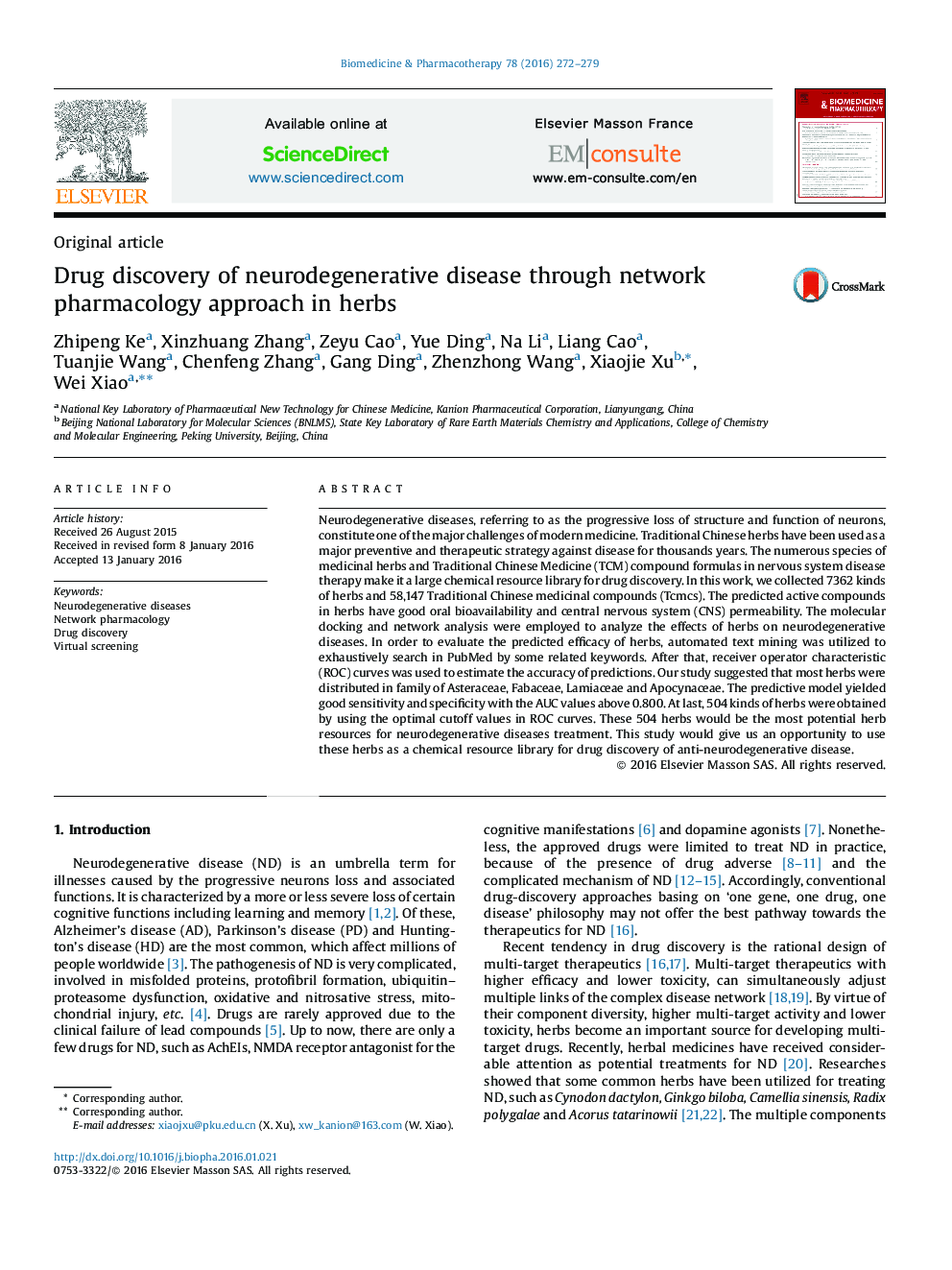| کد مقاله | کد نشریه | سال انتشار | مقاله انگلیسی | نسخه تمام متن |
|---|---|---|---|---|
| 2523927 | 1557964 | 2016 | 8 صفحه PDF | دانلود رایگان |
Neurodegenerative diseases, referring to as the progressive loss of structure and function of neurons, constitute one of the major challenges of modern medicine. Traditional Chinese herbs have been used as a major preventive and therapeutic strategy against disease for thousands years. The numerous species of medicinal herbs and Traditional Chinese Medicine (TCM) compound formulas in nervous system disease therapy make it a large chemical resource library for drug discovery. In this work, we collected 7362 kinds of herbs and 58,147 Traditional Chinese medicinal compounds (Tcmcs). The predicted active compounds in herbs have good oral bioavailability and central nervous system (CNS) permeability. The molecular docking and network analysis were employed to analyze the effects of herbs on neurodegenerative diseases. In order to evaluate the predicted efficacy of herbs, automated text mining was utilized to exhaustively search in PubMed by some related keywords. After that, receiver operator characteristic (ROC) curves was used to estimate the accuracy of predictions. Our study suggested that most herbs were distributed in family of Asteraceae, Fabaceae, Lamiaceae and Apocynaceae. The predictive model yielded good sensitivity and specificity with the AUC values above 0.800. At last, 504 kinds of herbs were obtained by using the optimal cutoff values in ROC curves. These 504 herbs would be the most potential herb resources for neurodegenerative diseases treatment. This study would give us an opportunity to use these herbs as a chemical resource library for drug discovery of anti-neurodegenerative disease.
Journal: Biomedicine & Pharmacotherapy - Volume 78, March 2016, Pages 272–279
